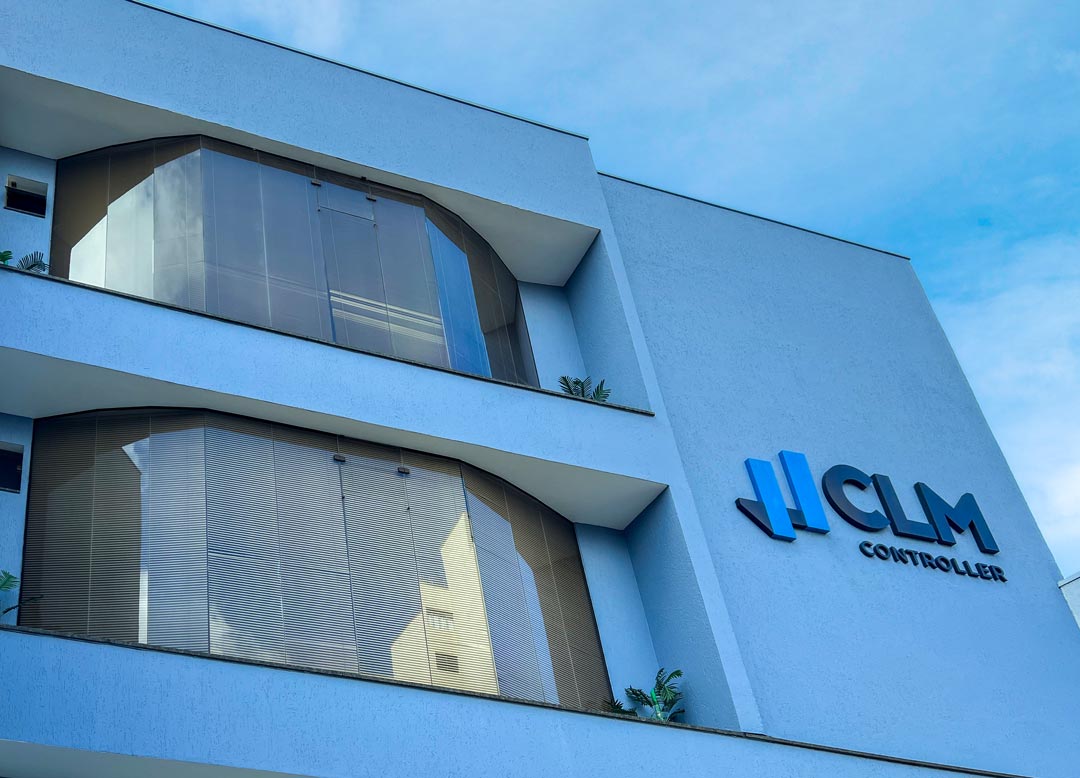The question "from what salary does it pay to be a PJ?" is increasingly common among professionals looking for greater autonomy, more financial return and alternatives to the traditional formal contract.
With the growth in hiring via Legal Entities (PJ), especially in areas such as technology, marketing, health and consultancy, it's natural that many are beginning to wonder if it's worth leaving the CLT and move into the business world.
In this article, you'll understand all the factors that need to be considered when making this decision. From comparisons between the CLT and PJ models, to tax calculations, lost benefits, financial advantages and the impact of different salary ranges.
We will also explain the tax regimes, such as Presumed Profit, Real Profit and IRPJ, as well as show you how to obtain your CNPJ card and give you tips for pay less tax.
What does it mean to be a PJ?
Be PJ (Legal Entity) means acting professionally through a CNPJ (National Register of Legal Entities), i.e. providing services as a company, not as an employee.
Instead of a traditional employment contract (CLT), o PJ professional signs a service contract with the contracting company, defining the conditions of the commercial relationship, such as values, delivery times and obligations.
The main difference is that the PJ has no employment relationship with the company they work for. This means more freedom, but also more responsibilities: the professional has to take care of issuing invoices, paying taxes and their own social security protection (INSS, pension, insurance).
CLT vs. PJ: what are the differences?
Before answering the question "from what salary does it pay to be a PJ?", it is essential to understand the differences between CLT and PJ.
CLT (Consolidation of Labor Laws)
The CLT regime is the traditional contract with a formal contract, with various labor rights and guarantees:
- Paid vacation + additional 1/3
- 13th salary
- FGTS
- Maternity and paternity leave
- INSS with automatic collection
- Unemployment insurance
- Stability in the event of an accident or pregnancy
- Controlled working hours
However, all these benefits come at a cost. The net salary of those who work as CLTs is usually reduced by INSS and IRRF deductions, which in practice reduces the total amount received.
PJ (Legal Entity)
As for PJ professionals, when they issue invoices for services rendered, they receive the gross amount agreed with the contractor, without the INSS, FGTS and IR deductions. However, they are responsible for their own taxes and benefits.
The good news? It is possible to pay less tax legally by choosing the right tax regime, making a good financial management and with accounting support. We'll talk more about this throughout the article.
In addition, the PJ can:
- Providing services for several companies
- Set your own hours (depending on the contract)
- Choose where to work (face-to-face, hybrid or remote)
- Control your retirement and financial reserve
From what salary does it pay to be a PJ?
I'm sure you already know that being a PJ has its benefits, but after all, at what salary does it pay to be a PJ?
As a general rule, from a monthly salary of R$ 4,700.00 it can already pay to switch from CLT to PJ.
This is because, above this amount, CLT workers are subject to the maximum Personal Income Tax rate (27.50%), while PJ workers can contribute at lower rates - especially if they are covered by Simples Nacional.
For a better understanding, here's an example:
- CLT with a salary of R$ 8,000.00:
- INSS deduction: R$ 828.39
- IRRF deduction: R$ 955.19
- Total discounts: R$ 1,783.58
- Net salary: R$ 6,216.42
- PJ with income of R$ 8,000.00, taxed under Simples Nacional (6%):
- Taxes: R$ 480,00
- Net salary: R$ 7,520.00
In other words, the monthly difference could be more than R$ 1,300.00!
Of course, PJs need to plan to pay for their vacations, 13th birthday, health insurance and INSS on their own. But even so, in many cases the net gain is higher.
👉 See here for complete content on how to pay less tax being PJ!
After all, from what salary does it pay to be a legal entity and what taxes do legal entities pay?
The amount of taxes depends on a number of factors, such as turnover and the company's tax regime. As for the tax regime that a legal entity can adhere to, there are three options:
Simples Nacional
Simples Nacional is a tax regime aimed at companies with a turnover of up to R$ 4.8 million per year.
This regime has effective tax rates that vary from 6% a 19.5%depending on your activity and turnover. It is ideal for self-employed professionals and service providers.
Presumed Profit
O Presumed Profit is suitable for companies that cannot or do not wish to join Simples Nacional.
The tax burden is between 13.33% and 16.33%, adding up to IRPJCSLL, PIS, COFINS and ISS.
Real Profit
Finally, the Real Profit is mandatory for companies with a turnover of more than R$ 78 million or for specific activities.
Taxes are calculated on the company's actual profit. This can be advantageous for those with low profit margins or many deductible expenses.
So when the question is "From what salary does it pay to be a PJ?",
we can say that it is advantageous to open a CNPJ when collecting taxes through one of the above tax regimes becomes more economical than collecting taxes as an individual, whether self-employed or CLT.
Of course, this is from a fiscal (tax) point of view, but it's always important to remember that the benefits of being a PJ aren't just limited to tax savings.
How do I open a CNPJ and start working as a PJ?
Now that you know at what salary it pays to be a PJ, it's time to check out the step-by-step process for opening a CNPJ.
Although it may seem complicated at first glance, the process can be much simpler than you might think, especially if you have the support of a specialized accounting firm such as CLM Controller Accounting.
Below, we'll explain step by step how to open a CNPJ in a safe, legal and structured way, so that you can start acting as a legal entity with peace of mind:
1. Define the type of company (legal nature)
First of all, you need to choose the legal nature of your business. This choice depends on the type of activity you will be carrying out, your expected turnover and the structure of your work. The most common options for professionals wishing to work as a PJ are:
- MEI (Individual Microentrepreneur): Ideal for those who earn up to R$ 81,000 a year, work alone and carry out activities permitted in the MEI table.
- EI (Individual Entrepreneur): Suitable for those operating without partners, with a turnover above the MEI level.
- SLU (Sociedade Limitada Unipessoal): It allows you to open a company with limited liability even without partners.
- LTDA (Limited Company): Ideal when there are two or more partners in the company.
2. Choose the activity (CNAE)
O CNAE (National Classification of Economic Activities) defines the activity that your company will carry out.
This choice is fundamental, as it directly influences your tax framework, the need for specific licenses and even the taxes you will pay.
A common mistake at this stage is to choose a generic or inappropriate CNAE - which can cause future problems with the IRS. For this reason, the choice of CNAE should be made carefully and preferably with the help of an accountant.
3. Define the tax regime
The next step is to choose the tax regime most advantageous for your profile. This choice determines how much you will pay in taxes each month, and should preferably be made with the support of an accounting firm that provides services in tax consultancy.
- Simples Nacional: Ideal for companies with a turnover of up to R$ 4.8 million per year. It has reduced tax rates and tax unification.
- Presumed Profit: Recommended for companies with stable profit margins that don't benefit as much from Simples.
- Real Profit: More complex, but necessary for companies with high turnover or extremely low profit margins.
4. Issue the CNPJ card
Once you have opened your company at the Board of Trade, you can issue the CNPJ cardwhich acts as your company's "ID".
This document is essential for opening a company account, issuing invoices, hiring services, signing contracts and much more.
5. Regularize the company at the town hall and issue invoices
To provide services legally, you need to register your company with your local town hall.
This registration allows you to issue service invoices, a mandatory document for any company wishing to work with other companies.
6. Count on specialized support
It may seem like a lot, but you don't have to do it all yourself. A CLM Controller Accounting offers a complete service so that you can open your company quickly, safely and with zero bureaucracy.
We take care of everything so that you can start working as a PJ with peace of mind and total focus on your career.
What are the most common hiring models? Understand before deciding between CLT and PJ
Many people ask at what salary it pays to be a PJ. However, the analysis shouldn't be restricted to the financial side alone; it's recommended to take into account the advantages and disadvantages of each model.
CLT Contract (Celetista)
The CLT model, governed by the Consolidation of Labor Laws, is the most traditional in Brazil. Under this system, the worker has a signed contract, an employment relationship with the contracting company and a series of rights guaranteed by law.
The main benefits include:
- Paid vacation with a 1/3 constitutional increase;
- 13th salary at the end of each year;
- FGTS (Severance Indemnity Fund) with a monthly deposit of 8% of salary;
- INSS (National Social Security Institute) with direct contributions for retirement and other benefits;
- Unemployment insurance in cases of unfair dismissal;
- Maternity/paternity leave;
- Transport vouchers, food vouchers, health insurance and other benefits (which vary according to the company).
Despite the security and stability, the CLT model has one caveat: the net amount received is less than the gross salary, as there are automatic deductions from the paycheck.
These discounts include INSS, IRRF and other taxes, which considerably reduce the amount available each month.
Corporate Contract
In the PJ model, the professional does not act as a formal employee, but as a service provider with their own CNPJ. In other words, it's a company hired by another company, with no formal employment relationship.
In this format, a service contract is signed between the parties and payment is made by issuing an invoice.
This model has grown a lot in recent years, especially among professionals in technology, marketing, consulting, law, engineering and other areas of technical knowledge.
Among the main advantages of being a PJ are:
- Freedom to negotiate the price of the service and the method of payment;
- Greater flexibility in working hours and format;
- Possibility of serving more than one client at the same time;
- Tax reduction, if the tax framework is advantageous;
- Higher earning potential, especially when the professional acts strategically.
However, the PJ model also requires extra attention, because the professional..:
- You are not entitled to vacation or 13th salary by law (unless negotiated in the contract);
- You need to make your own contributions to the INSS in order to have access to pensions and other benefits;
- You must keep your accounts up to date, issue invoices and pay your monthly taxes correctly;
- You are responsible for creating your own emergency reserve and pension fund.
That's why it's essential that professionals know how to manage their income, organize their cash flow and, preferably, have the support of a specialized accounting firm.
From what salary does it pay to be a PJ: why are so many professionals switching to PJ?
The PJ model has been gaining strength in Brazil, especially in areas such as technology, design, marketing, consultancy, health and engineering. There are several reasons for this:
- Lower tax burden compared to CLT
- Freedom of schedule
- Possibility of serving several clients
- Higher earning potential
- Less bureaucracy in labor relations
With the rise in personal income tax (IRPF), many professionals are wondering at what salary it pays to be a PJ. The answer starts with calculating the break-even point between the two methods.
Benefits of working as a PJ
One of the main reasons why many professionals opt for the PJ (Legal Entity) model is autonomy.
By opening a CNPJ and starting to provide services as a company, the professional moves away from the rigidity imposed by the CLT regime and gains much greater freedom to conduct their career.
This freedom translates into different practical advantages - especially when it comes to controlling your own income, setting your own hours and even choosing who you do or don't want to work with.
Full control of your own remuneration
Unlike the CLT regime, where the salary is fixed and subject to mandatory deductions such as INSS and withholding income tax, the PJ has the possibility of freely negotiating their fees with each contractor.
This allows the amount charged to be adjusted accordingly:
- The complexity of the service;
- The estimated time commitment;
- The urgency of the delivery;
- The company's fixed costs (including taxes, payroll, accounting and social security).
In other words: PJs have the real possibility of increasing their earnings, something that often doesn't happen in a CLT career, where increases depend on promotions, collective bargaining agreements or limited annual adjustments.
More freedom to manage schedules and vacations
Those who work as PJs also have the freedom to organize their own routine. The service contract is usually based on deliverables or targets, rather than working hours. This means that the professional can:
- Work when you are most productive;
- Reconciling personal commitments with work;
- Schedule breaks and take vacations whenever you want, without depending on approval.
Although paid vacation is not guaranteed by law, PJs can anticipate and include this cost in the value of their services, creating a financial reserve that allows them to rest easy without compromising their monthly budget.
Choice of clients and projects
Another great benefit of being a PJ is that you can choose who you work with. Professionals can assess whether the client is trustworthy, whether the project is interesting and whether the contract meets their conditions.
In addition, you can provide services to several companies at the same time, increasing your income and the diversity of your client portfolio.
This freedom is particularly valuable for those who work in areas such as technology, marketing, design, consultancy, engineering, health, among others that are booming in the services market.
More strategic financial planning
Finally, working as a PJ allows for more personalized financial planning. Professionals can adjust their figures to include in the price of the service all the charges they have to bear, such as:
- Issuing invoices;
- Tax collection (INSS, IRPJ, ISS, among others);
- Social security contribution (via pro-labore);
- Company bookkeeping;
- Operating costs (internet, software, coworking, etc.).
This type of planning allows you to build up a predictable net income that is often higher than that of the CLT regime - even without the traditional benefits such as 13th salary or FGTS. The secret lies in understanding your own costs, pricing correctly and maintaining good accounting and financial organization.
The importance of a good service contract for PJs
When choosing to act as a legal entity, one of the most important - and often overlooked - points is to draw up a well-structured service contract.
This document is essential to guarantee legal certainty, define expectations and avoid conflicts between the service provider (the PJ) and the contracting company.
Unlike the CLT regime, where rights and duties are regulated by labor legislation, in the PJ model there is no employment relationship, which makes the contract the only legal basis for the professional relationship.
What should a service contract contain?
A well-drafted contract must cover all aspects of the business relationship between the parties. The main points that should be formalized are:
- Value of the service provided:
The contract needs to clearly specify the amount agreed for the provision of services. This includes fixed monthly amounts, if applicable, or remuneration per project/delivery.
In addition, it is possible to include automatic adjustments based on inflation (such as the IPCA) or through annual renegotiation. - Payment terms and conditions:
It is essential to make it clear when and how payment will be made - whether it will be via bank transfer, boleto, PIX or other means, and what the deadline is after the invoice has been issued (e.g. 15 days after issue).
In practice, this helps PJs to keep their financial organization and cash flow up to date. - Delivery deadlines and scope of work:
The contract must define which activities will be carried out, which deliverables are planned, the estimated volume of hours (if applicable) and which are not included in the scope - preventing ambiguous interpretations and unpaid "extra demands". - Form of annual adjustment:
In long-term contracts, it is advisable to include an annual adjustment clause, either based on an official index (such as IPCA or IGP-M) or by agreement between the parties.
In practice, this keeps the value of the service up to date and avoids financial losses for the PJ over time. - Provision for unpaid leave:
Although paid vacations are exclusive to the CLT regime, the PJ contract can provide for scheduled breaks in service, with or without pay.
Having this clause helps the professional to plan and avoid conflicts due to temporary absence. - Making up days not worked:
The contract can stipulate how the adjustment will be made in the event of absence, long holidays or recess.
For example, it is possible to agree that days will be made up earlier or later, or that delivery will be maintained by rearranging the schedule. - Recognition of the absence of an employment relationship:
This is one of the most critical points of the contract. It must be clearly stated that the provider is self-employed, acting as a company, without direct subordination, habituality or personality - characteristics that would constitute an employment relationship. This protects both parties from future labor liabilities.
How can you guarantee security and stability as a PJ?
Although the PJ regime provides autonomy and flexibility, many professionals still feel insecure because they don't have the rights guaranteed by the CLT.
However, with organization and planning, it is possible to work as a legal entity with security and stability.
Here are some important strategies:
- Creating a financial reserve: As a PJ, it is essential to have an emergency reserve that covers at least 3 to 6 months of expenses. This gives you peace of mind during periods without contracts or unforeseen health problems.
- Planning vacations and benefits: Include amounts equivalent to vacations, 13th salary and other benefits in your monthly pro-labore. This way, you can guarantee these advantages on your own.
- Taking out insurance: Consider taking out income insurance, health insurance and life insurance. Many corporate plans are available for PJs and ME or MEI companies.
- Contribution to the INSS: By issuing pro-labore and paying the GPS, the PJ retains the right to social security benefits, such as retirement, sick pay, maternity pay and others.
- Diversification of income sources: Having more than one client or ongoing service is an efficient way of reducing risks and ensuring a constant flow of income.
From what salary does it pay to be a PJ: practical simulations: PJ vs CLT in different salary ranges
To better understand at what salary it pays to be a PJ, see below for some comparative simulations between CLT and PJ:
Salary range: R$ 4,000.00:
- CLT: average net salary of R$ 3,200.00 (with deductions for INSS and IRRF).
- PJ (Simples Nacional, 6%): Approximate net income of R$ 3,750.00, including taxes and basic charges.
- Result: small financial advantage for PJ, but may not pay off without considering CLT benefits.
Salary range: R$ 7,000.00:
- CLT: average net salary of R$ 5,200.00.
- PJ (Simples Nacional + INSS + accounting): Net income from R$ 6,200.00 to R$ 6,500.00.
- The result: a growing advantage for PJs, with the margin to cover their own benefits and still earn more.
Salary range: R$ 12,000.00:
- CLT: average net salary of R$ 8,000.00.
- PJ (Simples Nacional or Lucro Presumido): Net income of R$ 10,000.00 to R$ 11,000.00, depending on the tax regime.
- The result: the PJ option is clearly more advantageous, especially if tax planning is involved.
Conclusion: from what salary does it pay to be a PJ?
Based on all the analyses and simulations, we can conclude that from R$ 5,000.00 to R$ 7,000.00 per month, it is already worth considering the transition to PJ.
Above that, the tax savings, the freedom to negotiate and the net gain make the PJ regime even more advantageous.
The decision must be personalized. Evaluate your goals, your fixed costs, your risk tolerance and your professional profile. If well planned switching to the PJ regime can represent a significant leap forward in your financial and professional life.
And remember: Having the support of a specialized accounting firm is essential to avoid mistakes, optimize your taxation and maintain the regularity of your business.
How to start a business with the support of CLM Controller?
If you've made it this far, you've already understood from which salary does it pay to be a PJ? and the benefits of acting as a legal entity. Now it's time to take the next step with security, planning and full professional support.
If you still have doubts about starting a business, the team at CLM Controller Accounting is ready to help, click here and talk to us!
We take care of the entire bureaucratic process: defining the CNAE, choosing the best tax regime, issuing the CNPJ card, license, releasing the electronic invoice and much more - all in a simple, transparent and fast way.
Start today with someone who understands the subject!
Discover our specialized service in starting a business from CLM Controller
Gain professional freedom, pay less tax and count on the support of specialized accounting to make your company grow safely.
We serve all sizes and types of business, providing services ranging from starting a company and tax planning to audit and submitting tax obligations.
Frequently asked questions about the choice between CLT and PJ
1. From what salary does it pay to be a PJ?
According to CLM Controller, generally from R$ 4,700 per month it's already starting to be worth migrating to a PJ, because this amount exceeds the maximum income tax bracket for individuals (27.5%) - and in Simples Nacional the rates are much lower.
2. Why does this amount make a difference?
With CLT, you pay IRPF up to 27.5% on salaries above R$ 4,664.68. As a PJ, if you fall under Simples Nacional, the effective rate can vary from 6% to 19.5%depending on activity and turnover. This can result in significant savings.
3. How much higher does the PJ remuneration have to be?
Sources indicate that the gross value as a PJ should be 20% to 50% larger than the CLT salary, to cover taxes, accountants and compensate for benefits such as vacations and 13th .
4. What costs and responsibilities does the PJ assume?
Taxes and obligations: Simple or Presumed Profit, INSS (pro-labore), accountant, issuing invoices.
Benefits you no longer receivevacations, 13th, FGTS, unemployment insurance, corporate health insurance, etc.
5. Do you have to earn double the CLT to be worth it?
In practice, this is a common opinion on forums, especially when there are many benefits, fixed costs or instability. On Reddit, for example: In other words, many professionals feel that, with fewer benefits or lower income, the risk and effort are not worth it.









